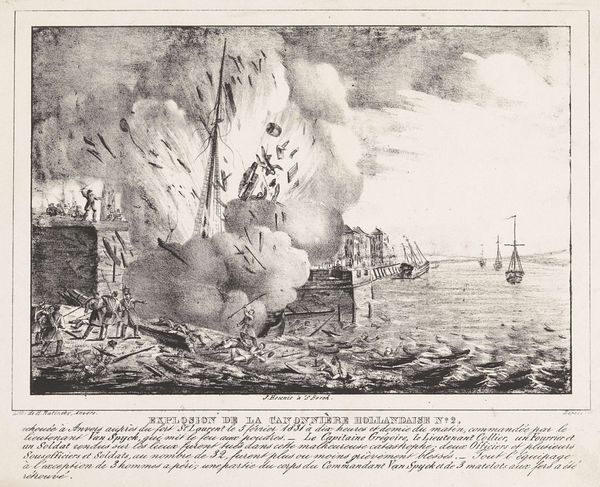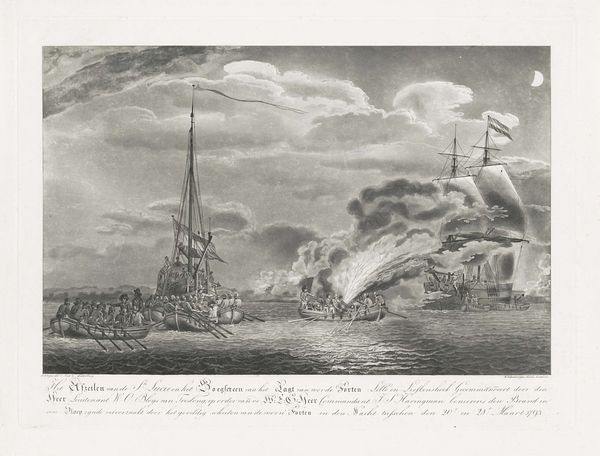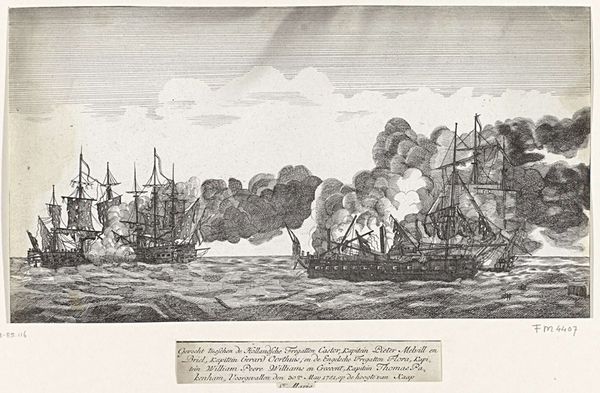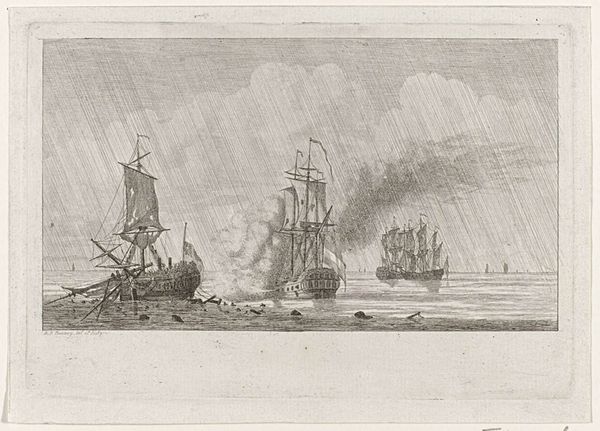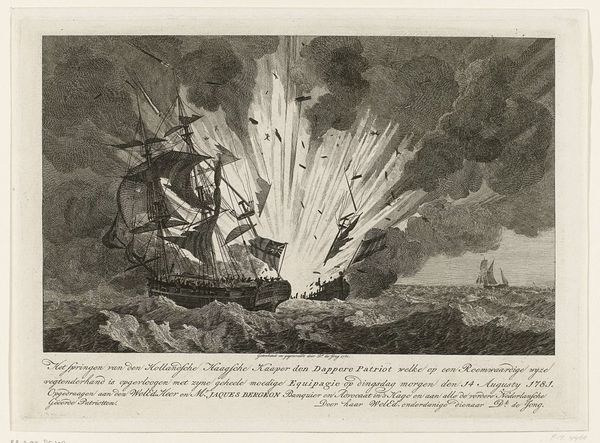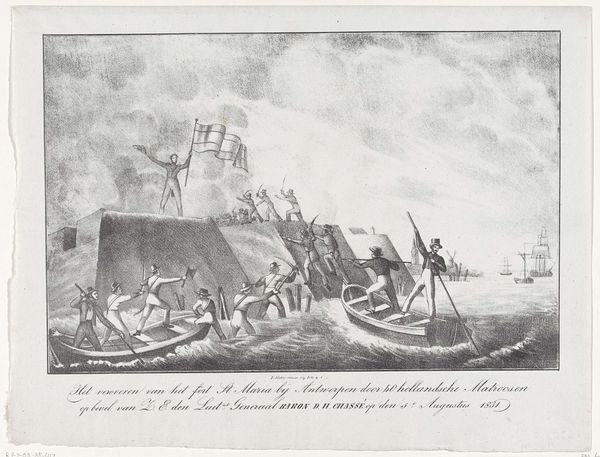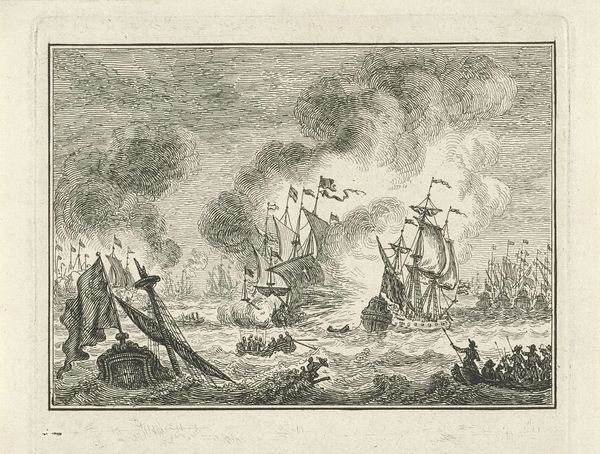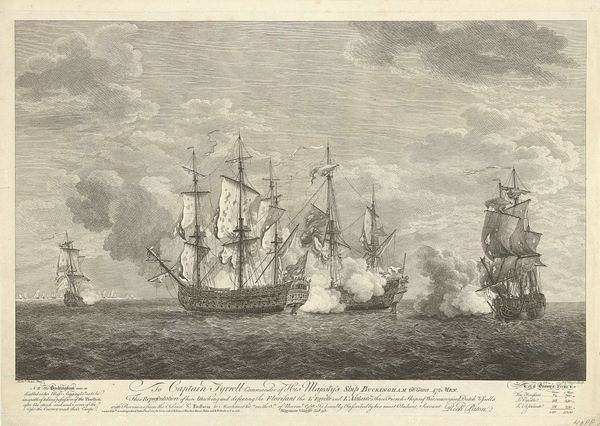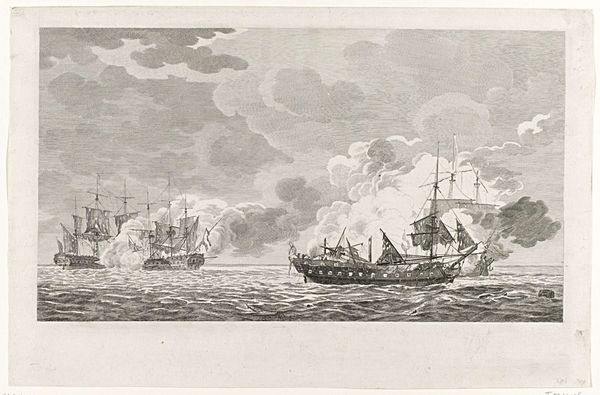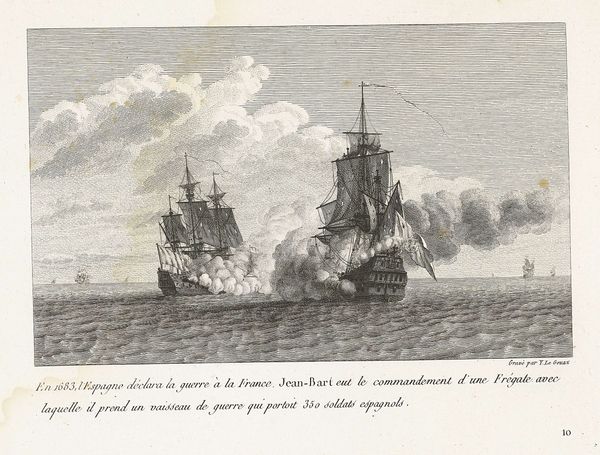
print, engraving
# print
#
old engraving style
#
landscape
#
history-painting
#
engraving
#
realism
Dimensions: height 298 mm, width 400 mm
Copyright: Rijks Museum: Open Domain
Curator: This is a fascinating historical print titled "Afslaan van de aanval op de twee kanonneerboten, 1831," created in 1831. It's an engraving, likely on paper. Editor: My first thought is of how dramatic it is, all sharp lines and contrasting tones to depict a rather chaotic scene. I see two ships battling in choppy water. Curator: Right. This work depicts the repelling of an attack by the Belgians on two Dutch gunboats. Think about the materiality of this image: an engraving intended for mass consumption, depicting a moment of Dutch victory during a time of national upheaval and tension in the years that would follow the Belgium Revolution. How does it communicate that purpose to a wide viewership? Editor: The visual language of printmaking really lends itself to heroic narratives like this. The medium itself – being reproducible – turns the event into something iconic and widely distributed. You get that clear sense of, “we were here; this is how it happened". The focus on labour also emerges, not just in what is depicted in terms of human struggle but in the skilled execution of the work in printmaking. I imagine it demanded precise labour for what was likely supposed to be rapid distribution and consumption. Curator: Exactly. The choice of depicting this specific moment—a "repelling" of an attack—speaks to the complexities of national identity and historical narrative. In 1831, the memory of previous clashes and future anxieties likely influenced the artist's composition and the public's interpretation of the work. We have to read through that lens, don’t you think? Who is this artwork serving in representing and reinforcing that dominant discourse? Editor: Absolutely, and I can see it doing that in several ways. Take the ships themselves; their wooden construction and rigging speaks volumes about maritime strength and dominance as materials and the image then works in tandem to strengthen notions of power and industry in Dutch history. I hadn't initially made that connection. It gives me more insight into this image. Curator: Indeed. When we consider this image alongside the political context, questions emerge about the intended message. The artist clearly makes conscious decisions. Even though we don't know their name, their message is clear and directed to the intended Dutch audiences of that time. It's a testament to how even ostensibly 'realistic' depictions are, in essence, carefully constructed narratives. Editor: It has been interesting to see the work behind it: materials and craft to further this idea of the nation and heroism.
Comments
No comments
Be the first to comment and join the conversation on the ultimate creative platform.
